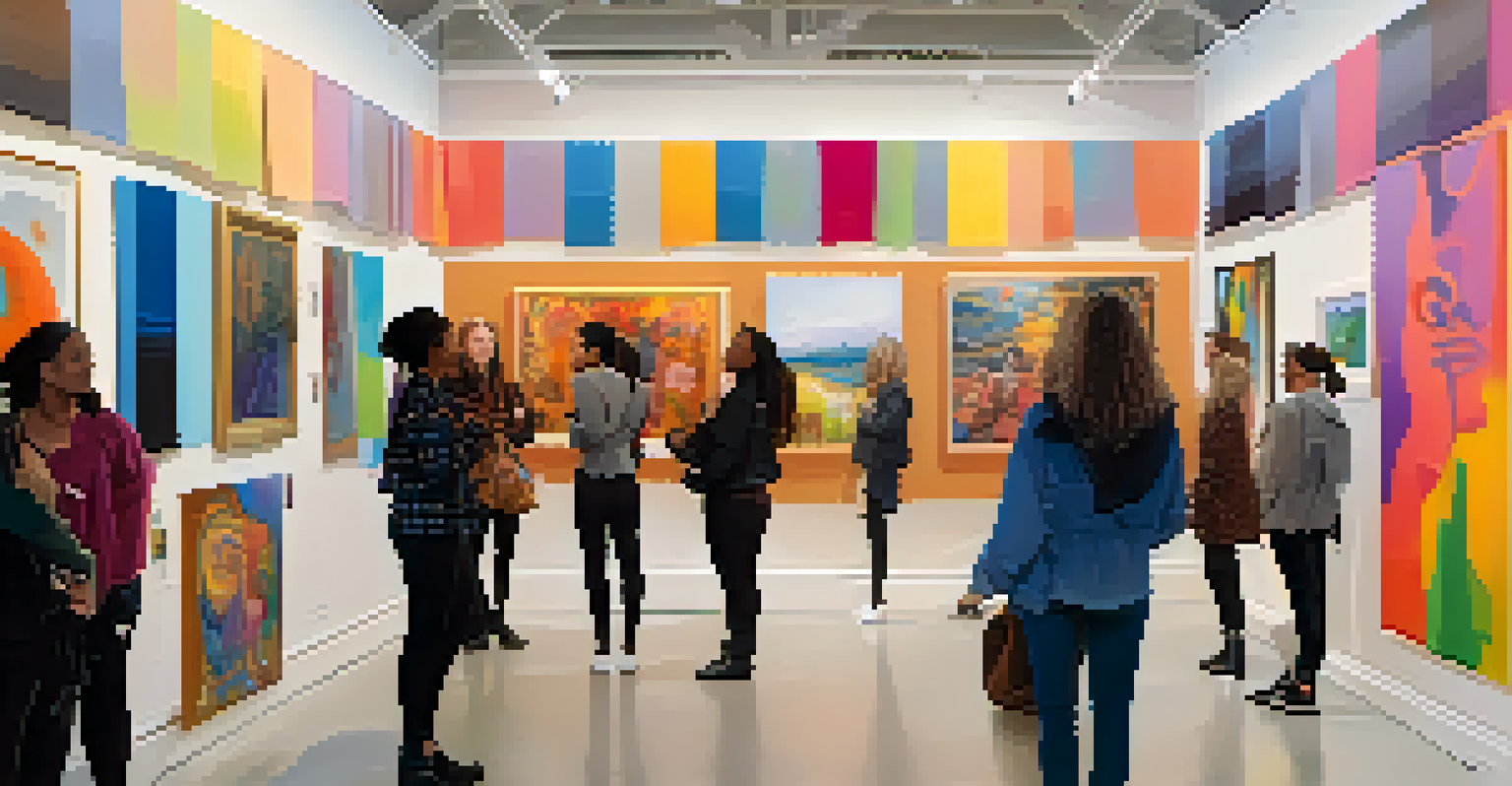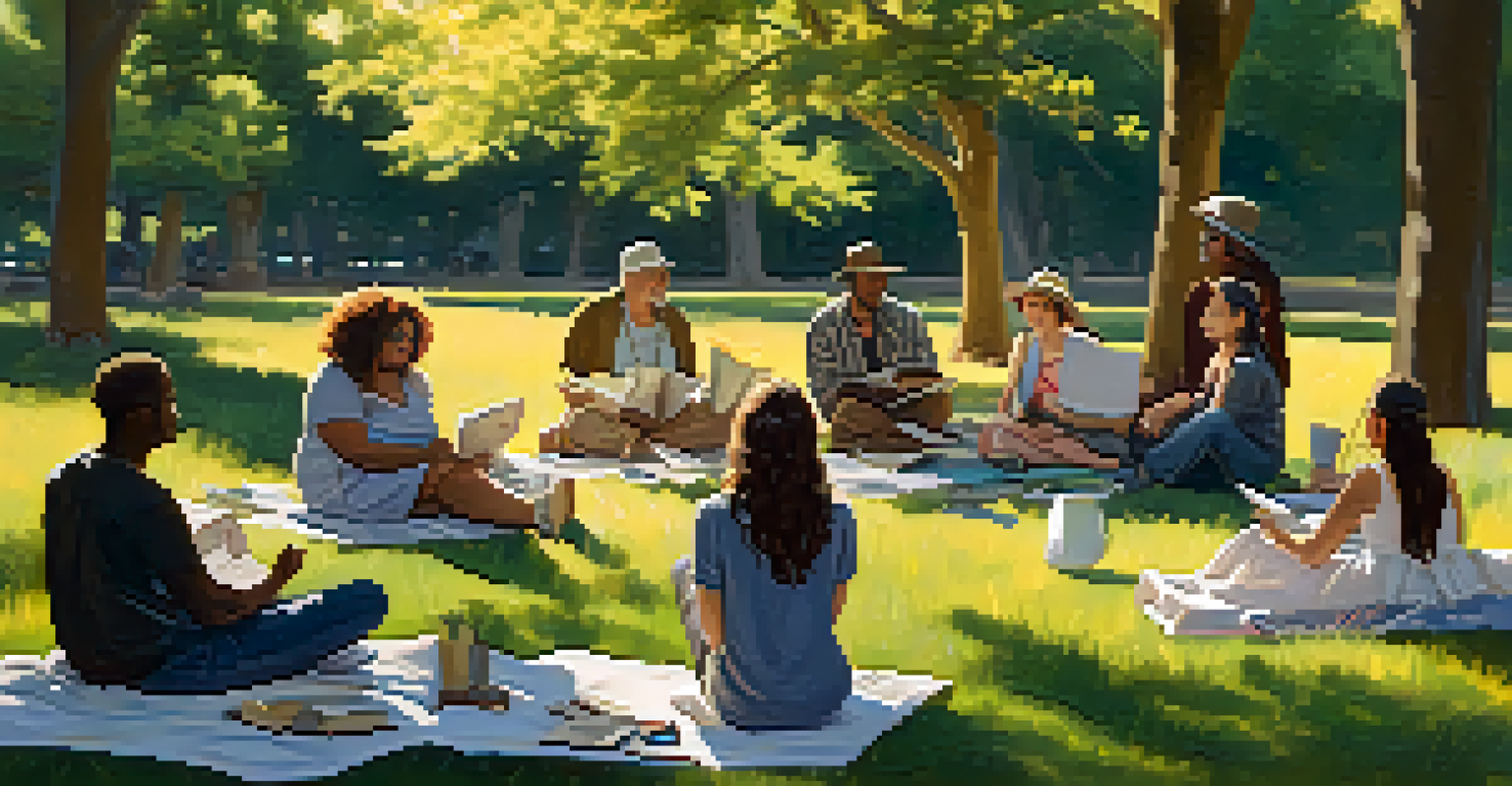The Influence of Gender on Art Criticism: A Critical Lens

Understanding Gender Dynamics in Art Criticism
Art criticism is not just about evaluating art; it’s also about understanding the lenses through which we view it. Gender dynamics play a crucial role in shaping these perspectives, influencing the way art is perceived and interpreted. Historically, art criticism has been dominated by male voices, which has often skewed the representation of female artists and their work.
The art world has a history of favoring certain voices over others, and it's time we broaden the conversation to include the narratives that have been silenced.
This male-centric viewpoint can lead to a narrow understanding of artistic expression, overshadowing the diverse contributions of women and non-binary artists. When we consider the influence of gender, it becomes clear that art criticism is not a neutral ground; it’s a conversation heavily colored by the critic's identity and experiences. Understanding this dynamic is the first step towards a more inclusive art world.
As we explore further, we’ll see how the gender of both the artist and the critic can impact the narratives we construct around art. This exploration is essential for appreciating the full spectrum of artistic contributions across genders.
Historical Context: Women in Art and Criticism
To appreciate the current state of art criticism, we must look back at history. Women have been creating impactful art for centuries, yet their contributions have often been overlooked or dismissed. The male-dominated art world has not only marginalized female artists but has also shaped the narratives surrounding their work through a male-centric lens.

In the 20th century, movements such as feminism began to challenge these narratives, advocating for equal representation in both art and criticism. Critics like Linda Nochlin famously questioned why there have been no great women artists, sparking debates that continue to resonate today. This historical context helps us understand the long-standing biases in how art is critiqued and valued.
Gender Dynamics Shape Art Criticism
Art criticism is influenced by gender dynamics, affecting how artists and their work are perceived and interpreted.
Recognizing this history is crucial because it informs the present. As contemporary critics strive to broaden their perspectives, understanding the past becomes a vital part of re-evaluating current practices in art criticism.
Gender Bias in Art Criticism: Recognizing Patterns
Gender bias in art criticism can manifest in various ways, from the language used to describe works to the prominence given to certain artists. Research has shown that male artists are often described with strong, assertive language, whereas female artists might be characterized in more passive or emotional terms. This subtle bias can influence public perception and, consequently, market value.
Intersectionality is not just a lens; it's a framework for understanding the complexities of identity and how they shape our experiences and expressions in art.
Moreover, when exhibitions feature predominantly male artists, critics may unconsciously perpetuate the idea that male work is the standard against which all art should be measured. This can create a feedback loop where female artists struggle to gain visibility and recognition. Recognizing these patterns is vital for anyone engaged in art criticism, as awareness is the first step toward change.
By actively addressing these biases, critics can begin to reshape the narrative around art, making it more equitable and representative. This change not only benefits artists of all genders but enriches the art community as a whole.
The Role of Intersectionality in Art Criticism
Intersectionality is a critical framework that examines how various social identities—such as gender, race, and class—interact to shape individual experiences. In the realm of art criticism, this means recognizing that a critic's identity can influence their perspectives and biases. For instance, a woman of color may bring a different viewpoint to the table than a white male critic, enriching the discourse around art.
By considering intersectionality, critics can better understand the complexities of artists' backgrounds and how these factors influence their work. This approach encourages a more nuanced discussion that goes beyond traditional gender binaries, embracing a spectrum of identities. It also fosters a more inclusive environment where diverse voices are celebrated rather than sidelined.
Historical Bias Affects Present Critique
The historical marginalization of female artists has shaped modern art criticism, requiring a reevaluation of biases to promote inclusivity.
Ultimately, applying an intersectional lens allows for a deeper appreciation of art that reflects the multifaceted nature of human experience. This not only enhances critical discussions but also promotes a richer understanding of the art itself.
Case Studies: Gendered Perspectives in Art Criticism
Examining specific case studies can illuminate how gender shapes art criticism. For example, the reception of artists like Frida Kahlo and Georgia O'Keeffe highlights how their gender influenced the narratives constructed around their work. Kahlo’s art is often framed through the lens of her personal suffering, while O'Keeffe's work is frequently sexualized, showing how critics can impose gendered interpretations on art.
These examples underscore the importance of critically analyzing the language and context used in art criticism. By dissecting these narratives, we can identify the biases that may distort our understanding of an artist's intent and significance. This approach not only benefits critics but also empowers audiences to engage with art more critically.
In doing so, we can work towards dismantling the stereotypes that have historically plagued female artists and create space for more authentic interpretations of their work. The goal is to shift from a gendered narrative to one that honors the artist’s vision, regardless of their gender.
Changing the Narrative: Women Critics and Their Impact
The rise of women critics has significantly influenced the landscape of art criticism. These voices challenge traditional narratives and offer fresh perspectives that highlight the work of female artists. By promoting diverse viewpoints, women critics are actively reshaping the discourse around art, making it more inclusive and equitable.
Notable critics like Roberta Smith and Hito Steyerl have made substantial contributions to the field, often focusing on underrepresented artists and movements. Their work not only changes the conversation but also inspires new generations of critics and artists to embrace a broader understanding of art. This shift is essential for fostering a more balanced representation in both criticism and the art world.
Intersectionality Enhances Understanding
Applying an intersectional lens in art criticism allows for a deeper understanding of diverse perspectives and experiences in art.
As we continue to see more women and non-binary critics emerge, the hope is that the art world will become a space where diverse voices are celebrated. This change can lead to a richer, more vibrant art community that reflects the multiplicity of human experiences.
The Future of Art Criticism: Embracing Diversity
Looking ahead, the future of art criticism lies in embracing diversity and inclusivity. As the art world evolves, so too must the voices that shape its narratives. By prioritizing representation across gender, race, and other identities, we can create a more equitable space for both artists and critics.
Education plays a crucial role in this transformation. By teaching emerging critics about the impact of gender and intersectionality in their work, we can foster a new generation that values diverse perspectives. This commitment to inclusivity will enrich the critical discourse surrounding art, leading to a more comprehensive understanding of artistic expression.

Ultimately, a more diverse art criticism landscape not only benefits artists but also enhances the experiences of audiences. By challenging traditional narratives and embracing new voices, we can ensure that the art world reflects the richness of our shared human experience.